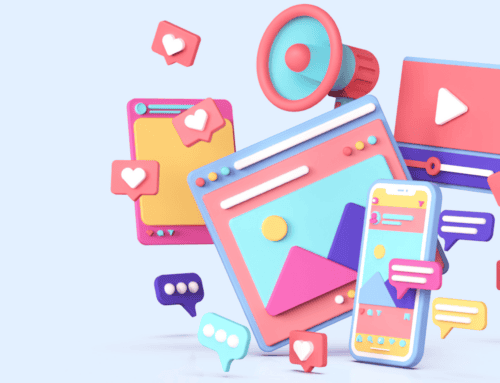It’s a common mistake to treat paid traffic like organic traffic. Organic traffic comes through search engines such as Bing or Google. Its users are generally interested in exploring the goods and services offered through your website. Paid traffic, on the other hand, comes through PPC (Pay-Per-Click) ads and is fiercely competitive. By and large, its users are interested in finding a solution to a particular problem.
Because most traffic (90%) is organic, most homepages are built for organic users. Paid users rarely get much out of them, however. Because PPC ads are generated from specific searches, users who click on them usually aren’t interested in learning more about your business; they’re looking to make a purchase. For that reason, sending them to your homepage is a mistake. It’s a hub, not a launching pad.
In order to convert paid traffic, you need a focused, targeted, and relevant PPC landing page. PPC landing pages are standalone webpages centered on a single product or service. Unlike your homepage, which is designed to pique interest or raise awareness, PPC landing pages are designed solely to drive sales.
Even though they receive only a fraction of the traffic as your homepage, when properly established they should be responsible for a disproportionate amount of revenue. But in order to maximize conversions, there are a few key guidelines you need to follow.
Create Highly Specific & Unique PPC Landing Pages
PPC landing pages are not one size fits all. Every time you create a new digital ad campaign, you need to create a new landing page to go along with it. Digital ads are short. (Google ads are limited to 90 characters. Bing ads are limited to 180 characters.) And they only appear when users enter a particular set of keywords. Going from a set of highly specific search terms to a generic website is going to result in missed conversions.
Match Search Intent
PPC landing pages need to reflect the ads they’re linked to, including the keywords. This creates an immediate connection between the page and the ad. If users don’t see it, it’s likely they’ll bounce to a different website.
Lead with a Strong Headline
Your headline is the first thing people see when they land on your site. It needs to capture their attention and convince them to keep scrolling. But in order to be effective, headlines need to do more than match the keywords in your original ad. They also need to be:
- Clear. Get straight to the point. Direct headlines outperform clever ones.
- Simple. A strong headline offers a solution, pushes a benefit, or provides a hook. A great headline does all three. Introduce a problem. Explain your solution. Mention a benefit. Add a tagline to encourage users to read further.
- Positive. Negative words (e.g. Don’t, Can’t, Never, Worried, Worst) are good at getting clicks but bad at converting. They get at what scares and frustrates us, which is why they’re useful in PPC ads. But they’re counterproductive in PPC landing pages, which should focus on the positive benefits your business provides.
Include a Prominent Call to Action in Your PPC Landing Page
Make sure your call to action (CTA) stands out from the rest of the page. Place it above the fold, so it’s one of the first things users see. Use bright, contrasting colors to draw attention to it. Use action phrases (e.g. buy now, start today, subscribe now) to create urgency and motivation. Include directional cues to draw attention to them. (Arrows work, but images are more effective. Insert a picture of a person looking in the direction of the CTA.)
Include a Lead Capture Form
Sadly, not everyone who visits your website will be ready to buy. For these people, a lead capture form lets you remain in contact while they weigh their options. Lead capture forms don’t work without some sort of incentive, however. Offering a discount or special content (e.g. e-book, newsletter) to everyone who completes the form is a great way to increase engagement.
Use Emotive Images
Over half the brain is dedicated to visual processing, so it’s not a surprise that PPC landing pages with bright, colorful images perform well. However, it’s not only the quality of the image that matters, but also the content.
Humans are innately captivating, so put them front and center. Show pictures of them hanging out with friends and family. Show them smiling and having fun. Most of all, show them using your products and services. These types of images create positive associations that help convince people to make a purchase.
Add Trust Symbols
One of the easiest ways to boost sales is through social proof. In short, people are more likely to buy from your company if they know other people buy from it as well. It’s why McDonald’s advertises the number of hamburgers they’ve sold. Or why toothpaste companies brag about dentists who recommend their products. It shows they’re trustworthy.
Common forms of social proof include:
- Customer Testimonials
- Media Reviews
- Awards
- Accreditations
- Performance Figures
- Professional or Celebrity Endorsements
Major clients are another great trust symbol. Everyone knows large companies are risk-averse. Therefore, if they’re willing to do business with you, it says a lot about the quality of your products and services.
Minimize Distractions in PPC Landing Pages
Homepages exist in order to engage, intrigue, inform, and raise awareness. PPC landing pages, on the other hand, only exist in order to facilitate sales generation. Anything that gets in the way hurts your bottom line. In order to stop visitors from wandering off or getting distracted, keep the page as simple as possible.
A clean layout encourages users to scroll through quickly. Disabling pop ups and menus keeps them focused. Limiting buttons prevents them from clicking away to other parts of your website. The only links you want on the page are ones that may help convert users, such as reviews, blogs, or product videos.




